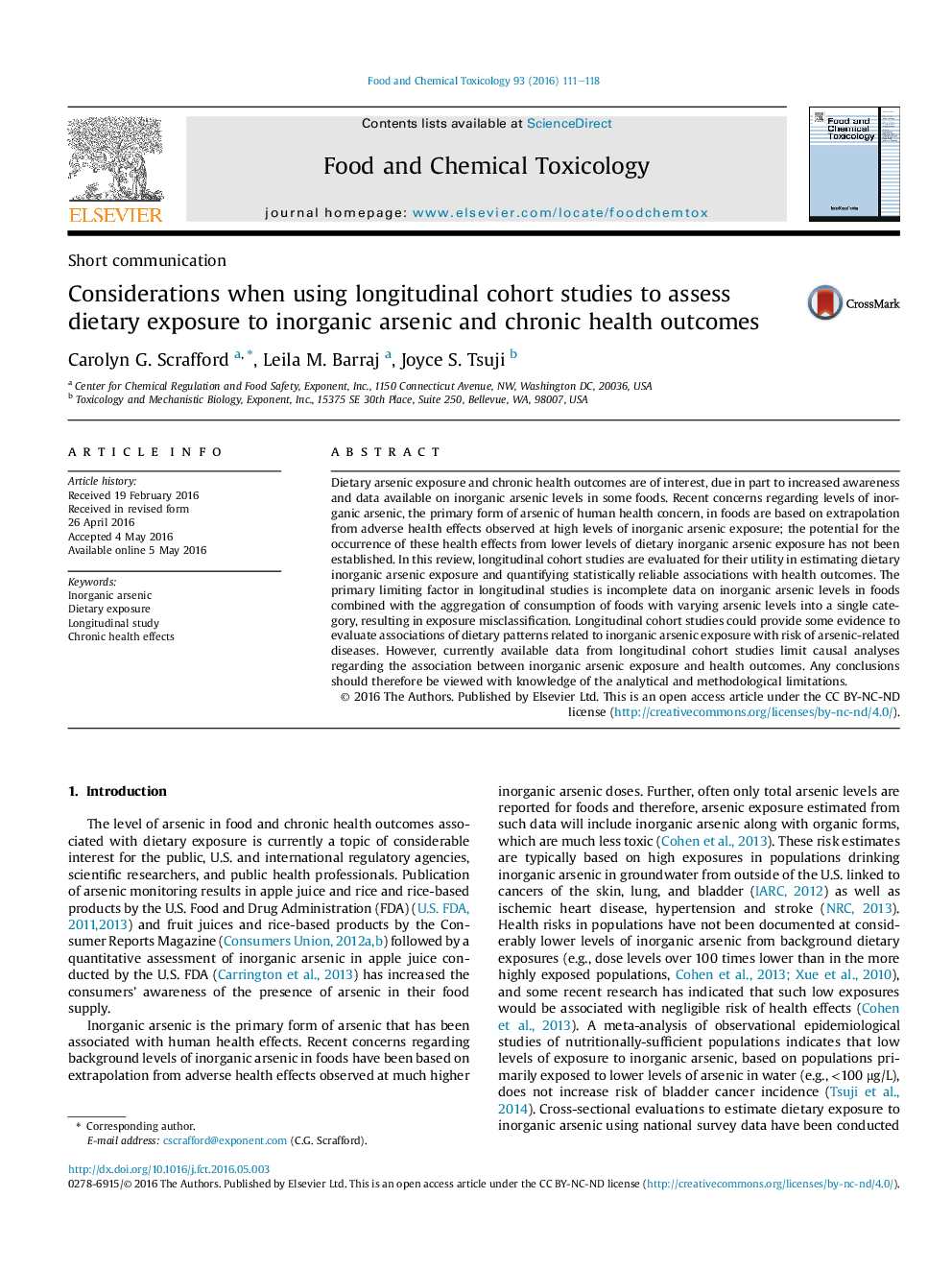| کد مقاله | کد نشریه | سال انتشار | مقاله انگلیسی | نسخه تمام متن |
|---|---|---|---|---|
| 5849281 | 1561751 | 2016 | 8 صفحه PDF | دانلود رایگان |
عنوان انگلیسی مقاله ISI
Considerations when using longitudinal cohort studies to assess dietary exposure to inorganic arsenic and chronic health outcomes
ترجمه فارسی عنوان
ملاحظات هنگام استفاده از مطالعات کوهورت طولی برای ارزیابی رژیم غذایی در معرض آرسنیک معدنی و نتایج سلامت مزمن
دانلود مقاله + سفارش ترجمه
دانلود مقاله ISI انگلیسی
رایگان برای ایرانیان
کلمات کلیدی
آرسنیک معدنی، قرار گرفتن در معرض غذا، بررسی طولی، اثرات سلامت مزمن،
ترجمه چکیده
قرار گرفتن در معرض آفتابگردان آرسنیک و نتایج سلامت مزمن، به علت افزایش آگاهی و اطلاعات موجود در سطح آرسنیک معدنی در بعضی از غذاها است. نگرانی های اخیر در مورد سطوح آرسنیک معدنی، فرم اولیه آرسنیک نگرانی از سلامت انسان در مواد غذایی بر اساس استخراج اثرات نامطلوب سلامتی در سطح بالایی از آرسنیک معدنی دیده می شود؛ پتانسیل وقوع این اثرات سلامت از سطوح پایین تر قرار گرفتن در معرض آرسنیک معدنی در رژیم غذایی مشخص نشده است. در این بررسی، مطالعات کوهورت طولی برای ارزیابی اثرات مفید آن در ارزیابی آرسنیک معدنی موجود در رژیم غذایی و تعیین ارتباطات قابل اعتماد با نتایج سلامتی ارزیابی می شود. فاکتور اصلی محدود کننده در مطالعات طولی، داده های ناقص در سطح آرسنیک معدنی در غذاها همراه با جمع آوری مصرف مواد غذایی با سطوح مختلف آرسنیک به یک دسته واحد است، که منجر به طبقه بندی نامناسب می شود. مطالعات کوهورت طولی می تواند بعضی از شواهد را برای ارزیابی ارتباطات الگوهای غذایی مرتبط با آرسنیک غیر معدنی با خطر بیماری های مرتبط با آرسنیک ارائه دهد. با این حال، داده های در حال حاضر در دسترس از مطالعات کوهورت طولی محدود تجزیه و تحلیل علی با توجه به ارتباط بین قرار گرفتن در معرض آرسنیک معدنی و نتایج سلامت. بنابراین، نتیجه گیری باید با شناخت محدودیت های تحلیلی و روش شناسی مشاهده شود.
موضوعات مرتبط
علوم زیستی و بیوفناوری
علوم کشاورزی و بیولوژیک
دانش تغذیه
چکیده انگلیسی
Dietary arsenic exposure and chronic health outcomes are of interest, due in part to increased awareness and data available on inorganic arsenic levels in some foods. Recent concerns regarding levels of inorganic arsenic, the primary form of arsenic of human health concern, in foods are based on extrapolation from adverse health effects observed at high levels of inorganic arsenic exposure; the potential for the occurrence of these health effects from lower levels of dietary inorganic arsenic exposure has not been established. In this review, longitudinal cohort studies are evaluated for their utility in estimating dietary inorganic arsenic exposure and quantifying statistically reliable associations with health outcomes. The primary limiting factor in longitudinal studies is incomplete data on inorganic arsenic levels in foods combined with the aggregation of consumption of foods with varying arsenic levels into a single category, resulting in exposure misclassification. Longitudinal cohort studies could provide some evidence to evaluate associations of dietary patterns related to inorganic arsenic exposure with risk of arsenic-related diseases. However, currently available data from longitudinal cohort studies limit causal analyses regarding the association between inorganic arsenic exposure and health outcomes. Any conclusions should therefore be viewed with knowledge of the analytical and methodological limitations.
ناشر
Database: Elsevier - ScienceDirect (ساینس دایرکت)
Journal: Food and Chemical Toxicology - Volume 93, July 2016, Pages 111-118
Journal: Food and Chemical Toxicology - Volume 93, July 2016, Pages 111-118
نویسندگان
Carolyn G. Scrafford, Leila M. Barraj, Joyce S. Tsuji,
